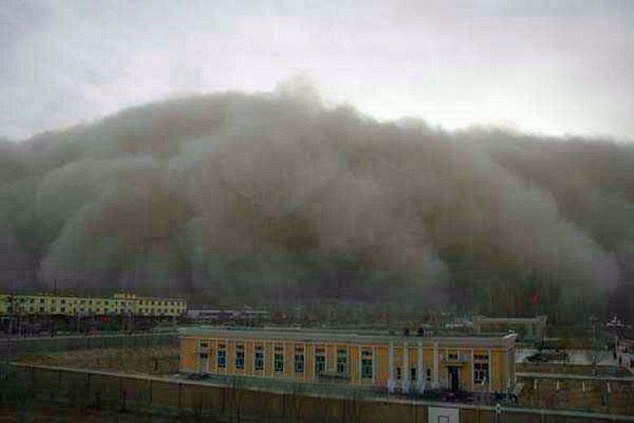
It’s not just Iran being pummeled by sandstorms this year; they are striking from China to London.
This year has seen a rash of massive dust storms around the Eastern Hemisphere. Some, naturally, point to climate change. But meteorologists note that sandstorms come and go very irregularly and say they cannot pinpoint a reason behind the current spate.

Tehran was overwhelmed by a monster sandstorm a year ago, and southern Iran has seen multiple sandstorms this year, especially in Ahvaz and Khuzestan province. The Islamic Republic blames Iraq for the storms hitting Iran and demands it do more to hold down the sand.
Last month, incredible footage showed the moment an unusual dust storm struck Belarus, turning day to night, and China has suffered four massive sandstorms since the start of the year.
Some have said climate change bringing excessive heat can make some areas more susceptible to dust storms, but one European scientist told the Daily Mail of London that the number of dust storms over the decades has always been widely variable.
Earlier this month, Britain was shrouded in a cloud of Saharan dust, known as blood rain, as the temperatures soared.
And incredible pictures taken at the beginning of April showed the moment ferocious red sandstorms devoured a city in China’s northwest—the fourth massive sandstorm to strike the northwest of that country this year alone.
The images show the city of Golmud in Qinghai Province, as it succumbs to a sweeping half-hour sandstorm which reduced the visibility to as little as 30 meters (100 feet), according to The People’s Daily.
In December, the small town of Bedourie in Queensland state, Australia, experienced a dust storm that residents said was unprecedented in magnitude. It lasted more than 90 minutes.
The Middle East has experienced several huge sandstorms this year. Last month, Jordan, Saudi Arabia, Iraq and Iran experienced severe dust storms and the previous month the Arabian Peninsula was hit.
In February, raging sandstorms engulfed Israel, Palestine, Lebanon and Egypt, causing the worst Israeli air pollution in years and whipping up huge waves in the Mediterranean Sea.
The storm, made up of accumulated dust carried from the far reaches of the Sahara, engulfed Cairo.
A storm that began April 1 in northern Saudi Arabia swept its way across Saudi Arabia, Oman and the United Arab Emirates and reached as far east as India and Pakistan over a period of seven days. It covered an area the size of the United States, Discover magazine reported.
Dr. Emilio Cuevas-Agullo, director of the Izana Atmospheric Research Center in Tenerife, Spain, told the Daily Mail that while it was difficult to say if there has been an increase in dust storms generally, population and urban growth in desert regions means an increased risk of people being affected by them.
He said: “We are more aware of the problem since we have much better monitoring, mainly from satellites, and forecast systems, in the last five to 10 years.” And he said the increase in the size of desert regions may well be leading to more sandstorms.
But he cautioned that there is a huge variation in the volume of dust storms annually and even when counted by decade, so he cannot conclude that the volume of sand storms is growing.
A NASA study, however, said: “Approximately half of the dust in today’s atmosphere may be the result of changes to the environment caused by human activity, including agriculture, overgrazing, and the cutting down of forests.”
